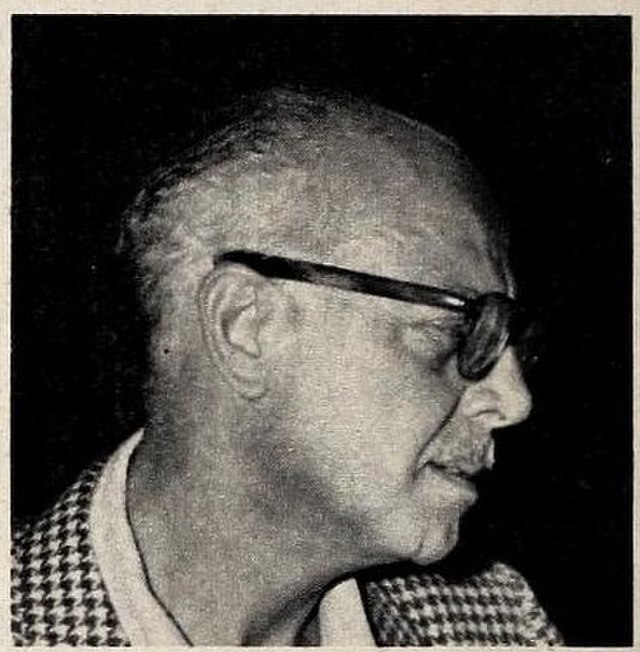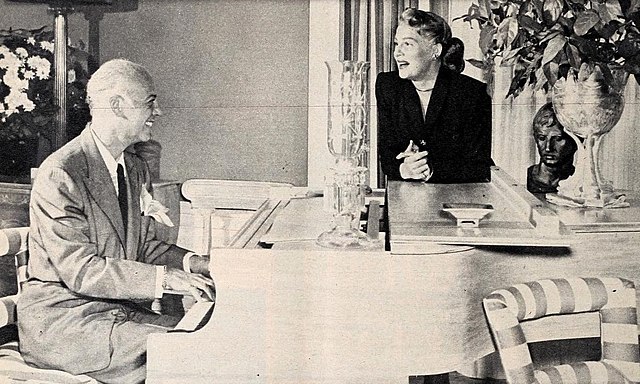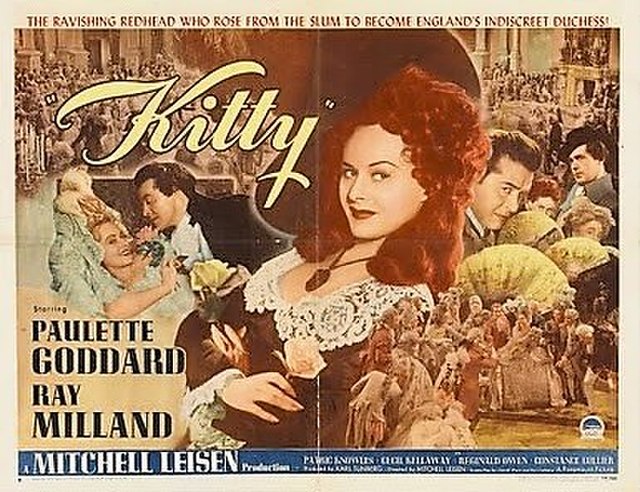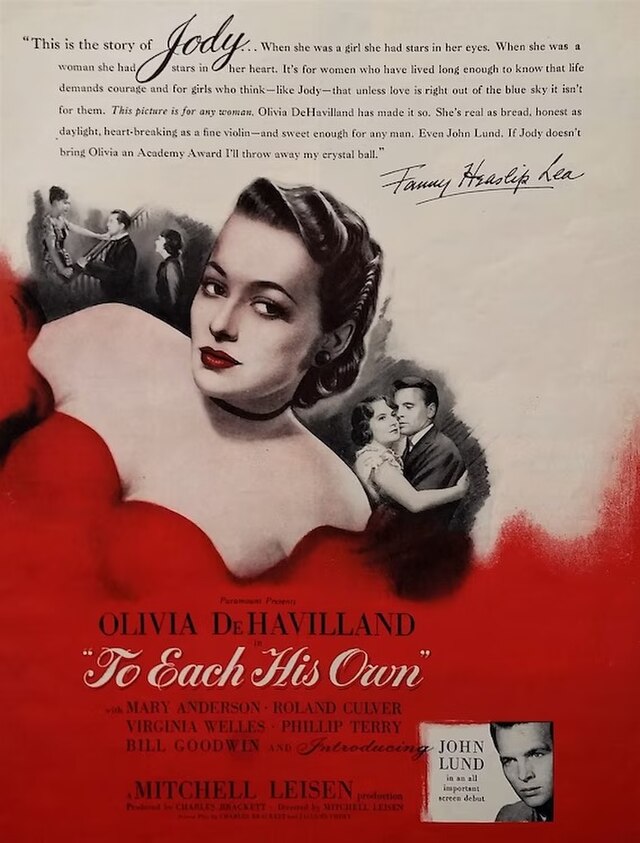Mitchel Leisen (1898 – 1972)
Biography and Directing Career
James Mitchell Leisen was born on October 6, 1898, in Menominee, Michigan, a small town on the state's Upper Peninsula. His early years were shaped by an interest in the arts, and he originally trained as an architect. This background in design would later prove invaluable to his career in Hollywood, where he became known for his meticulous attention to visual detail.
Entry into Hollywood
Leisen's entry into the film industry came not as a director but as a costume and set designer. During the 1920s, he worked on silent films, quickly establishing a reputation for his refined artistic sensibility. His talent caught the attention of Cecil B. DeMille, who hired him to work on lavish productions like The Sign of the Cross (1932). Leisen’s ability to craft visually stunning sets and costumes set him apart, leading to his transition into directing.
Rise as a Director
Leisen made his directorial debut in 1933 with Cradle Song, a drama that demonstrated his ability to bring warmth and elegance to storytelling. His breakthrough came with Death Takes a Holiday (1934), a supernatural drama starring Fredric March. The film showcased Leisen’s talent for balancing atmosphere and emotion, setting the stage for his future success.
Throughout the late 1930s and 1940s, Leisen became a major figure in Hollywood, directing a string of successful films, particularly romantic comedies and dramas. Two of his most celebrated films from this period, Easy Living (1937) and Midnight (1939), featured sophisticated humor and sparkling dialogue. Notably, both were scripted by Preston Sturges and Billy Wilder, who later became directors themselves—partly in frustration with how Leisen handled their work.
His 1940 classic, Remember the Night, starred Barbara Stanwyck and Fred MacMurray and was written by Sturges. The film blended romance and drama seamlessly, a hallmark of Leisen’s style. He followed it with Hold Back the Dawn (1941), a poignant immigrant love story with Charles Boyer and Olivia de Havilland. The film received several Academy Award nominations, further solidifying his reputation.
Visual Style and Storytelling
Leisen’s films were known for their lush production values, sophisticated wit, and emotional depth. He had a keen eye for composition, a skill honed during his early career in design. His work often featured opulent interiors, stylish costumes, and carefully composed shots that heightened the drama. While some screenwriters—most famously Sturges and Wilder—felt he prioritized visuals over the script, many actors and audiences admired his ability to bring characters to life.
Later Career and Decline
By the early 1950s, the Hollywood studio system was changing, and Leisen’s refined, old-world aesthetic began to fall out of fashion. He directed The Mating Season (1951), a delightful comedy featuring Thelma Ritter, but his career gradually slowed. He moved into television, directing episodes of popular series like The Twilight Zone and Shirley Temple’s Storybook.
Personal Life
Leisen was a private and reserved man, and while he never married or had children, he was known to have long-term relationships with men in Hollywood. At a time when being openly gay was risky for a public figure, he maintained discretion about his personal life. His artistic sensibilities and perfectionism made him a favorite among actors, particularly actresses like Olivia de Havilland and Barbara Stanwyck, who appreciated his sensitivity in directing.
Final Years and Legacy
By the 1960s, Leisen had largely retired from filmmaking, spending his later years away from the spotlight. He died on October 28, 1972, in Woodland Hills, Los Angeles, at the age of 74. He was cremated, and his remains were placed at the Chapel of the Pines Crematory.
Though his contributions were somewhat overshadowed by the rise of directors like Wilder and Sturges, Leisen’s work has been rediscovered and reassessed in later years. His best films remain classics of Hollywood’s Golden Age, celebrated for their elegance, emotional depth, and impeccable craftsmanship.
Today, Mitchell Leisen is recognized as one of the great unsung directors of classic Hollywood—an artist whose visual flair and storytelling finesse left an indelible mark on cinema.
Video: The Mitchell Leisen Movies
Analysis of Mitchell Leisen’s Directing Style
Mitchell Leisen was known for his visual sophistication, elegant storytelling, and keen sense of character dynamics. His background in costume and set design heavily influenced his directing approach, making his films some of the most visually polished of Hollywood’s Golden Age. Below are key aspects of his directing style:
________________________________________
Visual Elegance and Production Design
• Leisen had a deep appreciation for luxurious, meticulously crafted sets, often using them to reflect character status and emotions.
• His background as a costume designer and art director (before becoming a director) gave him a strong eye for composition, lighting, and wardrobe coordination.
• Films like Lady in the Dark (1944) showcase elaborate dream sequences, with lavish costumes and set pieces that enhance the psychological depth of the story.
________________________________________
Character-Driven Storytelling
• Unlike many directors who focused primarily on plot mechanics, Leisen was deeply actor-oriented, often working closely with performers to shape their roles.
• Actors like Olivia de Havilland, Barbara Stanwyck, and Charles Boyer praised his ability to bring out nuanced, emotionally rich performances.
• He had a knack for blending romance and drama seamlessly, as seen in Hold Back the Dawn (1941) and To Each His Own (1946).
________________________________________
Sophisticated Comedy and Wit
• Leisen was highly skilled in romantic comedy, often using humor to explore themes of class, mistaken identity, and societal expectations.
• Films like Midnight (1939) and Easy Living (1937) feature sharp, witty dialogue and fast-paced comedic timing, making them some of the best screwball comedies of the era.
• He frequently worked with screenwriters like Preston Sturges and Billy Wilder, though tensions arose as they believed he prioritized visuals over their scripts.
________________________________________
Thematic Depth and Emotional Nuance
• While Leisen was often dismissed as a “visual stylist” by critics in his time, his films contained deep emotional layers beneath their polished surfaces.
• Remember the Night (1940) blends romance, humor, and poignant social commentary, making it a standout holiday film.
• His stories often explored themes of redemption, identity, and personal transformation, adding depth beyond their glamorous exteriors.
________________________________________
Cinematic Fluidity and Pacing
• Leisen was a master of fluid camera movement and elegant framing, keeping his films visually engaging without feeling static.
• His pacing was measured yet dynamic, allowing emotional beats to breathe while maintaining a strong narrative flow.
________________________________________
Influence of the Studio System and Later Decline
• As a studio-era director, Leisen flourished within Paramount’s golden age, benefiting from top-tier production values and stars.
• However, with the rise of auteur directors like Wilder and Sturges, his reputation declined, as his collaborative approach was often misunderstood as lacking a distinct voice.
• His later work in television did not allow for the same level of artistic control, leading to a decline in his creative influence.
________________________________________
Legacy and Reassessment
• In later years, critics and historians have re-evaluated Leisen’s work, recognizing his films as underrated gems of classic Hollywood.
• His ability to combine stunning visuals with heartfelt storytelling has been rediscovered by modern audiences.
• Directors like Pedro Almodóvar and François Ozon have cited Leisen as an influence, particularly in their use of melodrama and visual opulence.
Personal Quotes
• On his approach to camera movement:
"The camera never moves arbitrarily in any of my films. It follows somebody across the room or some kind of action; therefore you are not particularly conscious of a moving camera."
• Reflecting on the explicit themes in Cecil B. DeMille's films:
"Everything was in neon lights six feet tall: LUST, REVENGE, SEX."
• On the impact of thoughts on an actor's performance:
"Thoughts alter the muscular structure of the face and you are able to read the thoughts going on behind."
What Others found of Leisen’s Direction
Mitchell Leisen's work elicited a range of responses from his contemporaries and later critics, reflecting both admiration and critique.
Contemporaries' Perspectives:
• Preston Sturges and Billy Wilder: Both esteemed screenwriters, they expressed dissatisfaction with Leisen's handling of their scripts. Their frustration with his directorial choices, which they felt compromised their narratives, motivated them to transition into directing themselves. This move was partly to ensure their scripts were realized as intended.
Critical Reassessment:
• Modern Critics: In recent years, critics have revisited Leisen's filmography, recognizing the depth and sophistication in his storytelling. His films are now appreciated for their nuanced exploration of themes like gender roles and identity. As noted in Senses of Cinema, Leisen's work often delved into "moral and sexual ambiguities," showcasing a "persistent reversal of gender roles" and a "delight in masquerade, impersonation and role-playing."
Awards and Recognition
Academy Awards
• Best Art Direction:
o Nomination: For Dynamite (1929), Leisen received an Academy Award nomination for Best Art Direction.
• Best Picture:
o Nomination: Leisen directed Hold Back the Dawn (1941), which was nominated for Best Picture.
Other Recognitions
• Academy Award for Best Visual Effects:
o Win: I Wanted Wings (1941), directed by Leisen, won the Academy Award for Best Visual Effects.
Movies directed by Mitchell Leisen
1933
• Cradle Song: A compassionate drama about a group of nuns who raise an abandoned baby girl within their convent, witnessing her growth and eventual departure into the outside world.
1934
• Death Takes a Holiday: The personification of Death takes human form to understand why people fear him, leading to unexpected emotional entanglements.
1935
• Four Hours to Kill!: Set in a theater lobby, this suspenseful narrative intertwines the lives of various characters, including a detective and his prisoner, over a tense four-hour period.
• The Big Broadcast of 1936: A musical comedy featuring a series of performances by popular entertainers of the era, centered around a radio station's efforts to boost ratings.
1936
• Hands Across the Table: A manicurist and a penniless playboy, both seeking wealthy spouses, find themselves falling for each other instead.
• Swing High, Swing Low: A romance between a singer and a trumpet player faces challenges as their careers take different trajectories.
1937
• Easy Living: A case of mistaken identity leads a working-class woman into the world of high society, resulting in comedic misunderstandings.
• Artists and Models: A musical comedy about a struggling artist who gains fame after his work is used in a comic strip, leading to romantic complications.
1938
• The Big Broadcast of 1938: Another musical revue featuring various performers, centered around a transatlantic race between two ocean liners.
• Spawn of the North: Set in Alaska, this adventure drama follows the rivalry between fishermen and poachers, testing friendships and loyalties.
1939
• Midnight: A penniless showgirl in Paris is roped into a scheme to pose as a Hungarian baroness, leading to romantic entanglements.
1940
• Remember the Night: A prosecutor falls for a shoplifter during the Christmas season, leading to a heartfelt exploration of love and redemption.
• Arise, My Love: An American pilot and a journalist fall in love amidst the backdrop of World War II, blending romance with wartime drama.
1941
• Hold Back the Dawn: A European gigolo schemes to marry an American schoolteacher to gain U.S. citizenship but finds himself genuinely falling in love.
1942
• I Wanted Wings: A drama focusing on the lives and loves of three U.S. Army Air Corps cadets during their training and service.
• The Lady Is Willing: A Broadway star adopts an abandoned baby, leading to a marriage of convenience with a pediatrician.
1943
• No Time for Love: A sophisticated photographer becomes romantically involved with a rough-and-tumble construction worker, leading to comedic situations.
1944
• Lady in the Dark: A successful magazine editor undergoes psychoanalysis to understand her recurring dreams, leading to revelations about her desires and fears.
• Practically Yours: A war hero and a radio commentator become entangled in a romantic misunderstanding, leading to unexpected love.
1945
• Masquerade in Mexico: A woman becomes involved in a smuggling plot while trying to escape her past in Mexico, leading to romantic entanglements.
• Kitty: A Cockney girl is transformed into a lady by an artist, leading to a series of romantic and social adventures in 18th-century England.
1946
• To Each His Own: A woman gives up her illegitimate son during World War I and watches from afar as he grows up, leading to poignant reunions.
1947
• Golden Earrings: A British officer escapes from the Nazis with the help of a gypsy woman, leading to an unexpected romance.
1948
• Dream Girl: A young woman escapes her mundane life through a series of romantic fantasies, leading to comedic misunderstandings.
1949
• Bride of Vengeance: Set in Renaissance Italy, a woman seeks revenge against the man she believes is responsible for her brother's death but finds herself falling in love with him.
1950
• Captain Carey, U.S.A.: An American war veteran returns to Italy to uncover the truth behind a betrayal that led to his unit's massacre during World War II.
• No Man of Her Own: A pregnant woman assumes the identity of a deceased woman after a train crash, leading to suspenseful twists.
1951
• The Mating Season: A mother poses as a cook for her son's new wife, leading to comedic and heartfelt family dynamics.
1952
• Young Man with Ideas: A mild-mannered law clerk moves his family to California to become a lawyer, facing various personal and professional challenges.
• Tonight We Sing: A biographical film about impresario Sol Hurok and his efforts to bring Russian artists to American audiences.
1953
• Little Boy Lost: A war correspondent searches for his lost son in post-war France, leading to a poignant journey of discovery.
1954
• Bedevilled: An American priest-in-training becomes entangled with a woman on the run in Paris, leading to a suspenseful drama.
1958
• The Girl Most Likely: A musical comedy about a young woman who becomes engaged to three men simultaneously, leading to humorous complications.
Television Work (1950s–1960s)
• The Ford Television Theatre (1954–1957)
An anthology drama series featuring standalone stories with different actors each episode.
• The Twilight Zone (1959)
Episode: "Escape Clause" – A man sells his soul to the devil in exchange for immortality but soon finds himself regretting the deal.
• Shirley Temple’s Storybook (1958–1961)
A children's anthology series hosted by Shirley Temple, adapting classic fairy tales and literary works.
• The Girl from U.N.C.L.E. (1966–1967)
A spin-off of The Man from U.N.C.L.E., featuring a female secret agent in Cold War espionage adventures.
• The Christophers (1955–1960s)
A religious and inspirational television program promoting positive values and good deeds.




